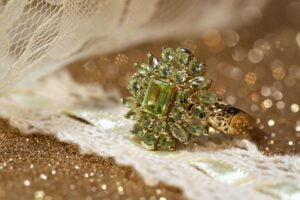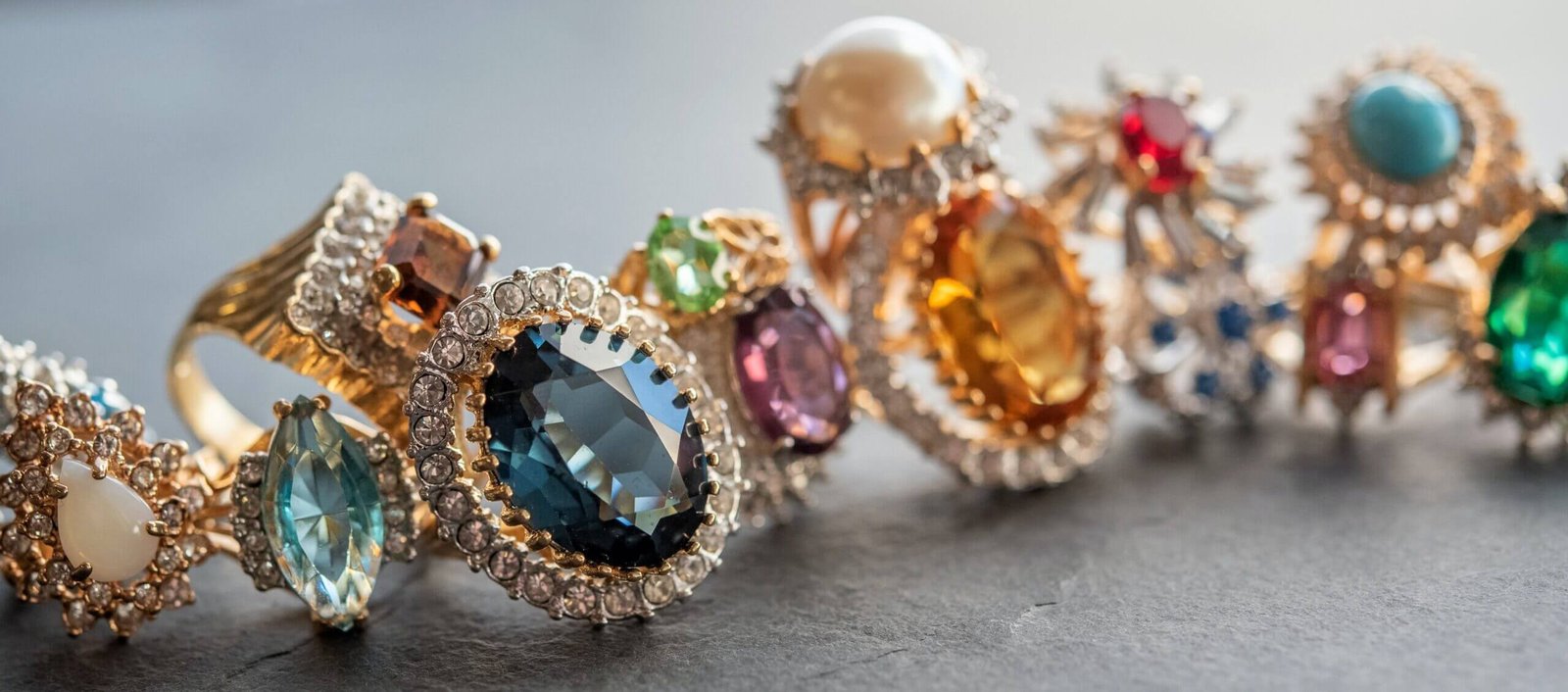What Are The Top 4 Gemstones?
What Are The Top 4 Gemstones? Looking to add a touch of sparkle and elegance to your jewelry collection? Look no further! In this article, we will explore the top 4 gemstones that will have you swooning over their beauty and versatility. Whether you’re a gemstone enthusiast or simply curious about the most sought-after gems on the market, we’ve got you covered. From the timeless allure of diamonds to the mesmerizing hues of sapphires, get ready to discover the radiant world of these stunning gemstones and why they hold a special place in the hearts of jewelry lovers everywhere. So, sit back, cozy up, and let’s embark on a journey to unravel the secrets behind these dazzling treasures.
1. Diamond
1.1 Formation
Diamonds are formed deep within the Earth’s mantle, under intense heat and pressure. They are created through a process called carbon crystallization, where carbon atoms are arranged in a unique crystal lattice structure. This formation process can take millions or even billions of years. https://www.aigsthailand.com/
1.2 Characteristics
Diamonds are known for their exceptional hardness, making them the hardest naturally occurring substance on Earth. They are also valued for their brilliance and ability to reflect light, creating that signature sparkle. Diamonds come in a variety of colors, including white, yellow, brown, and even rare and highly prized hues such as blue and pink.
1.3 Value
Diamonds have long been associated with wealth and luxury. Their value is determined by the famous “four Cs” – carat weight, color, clarity, and cut. Larger diamonds are generally more valuable, as are those with a higher color grade, greater clarity, and an excellent cut. Additionally, diamonds that are certified by reputable gemological institutes are often perceived as more valuable.
1.4 Popular Cuts
Diamonds can be cut into various shapes to enhance their brilliance and beauty. Some of the most popular diamond cuts include the round brilliant cut, princess cut, emerald cut, cushion cut, and marquise cut. Each cut has its own unique attributes and appeal, catering to different personal preferences and styles.
1.5 Famous Diamonds
Throughout history, several diamonds have gained worldwide recognition for their remarkable size, color, and historical significance. Famous diamonds include the Hope Diamond, a deep blue diamond with a fascinating history, the Koh-i-Noor, one of the largest diamonds in the world, and the Centenary Diamond, a flawless diamond known for its exceptional cut and clarity.

2. Ruby
2.1 Formation
Rubies are formed in the Earth’s crust under specific geological conditions. They are a type of corundum, which is an aluminum oxide mineral. The presence of minerals such as chromium and iron during their formation process gives rubies their vibrant red color.
2.2 Characteristics
Rubies are prized for their rich, red hue, often referred to as “pigeon’s blood” red. They are extremely durable and have a high hardness, second only to diamonds. This durability makes rubies ideal for a wide range of jewelry, from rings to necklaces.
2.3 Value
The value of a ruby is influenced by factors such as its color, clarity, cut, and carat weight. Fine-quality rubies with an intense, pure red color are highly sought after and can command a high price. Rubies with inclusions or a lighter color may be of lesser value. Like diamonds, certified rubies from reputable gemological institutes are often more valuable.
2.4 Popular Origins
Rubies are found in various parts of the world, but some of the most famous sources include Myanmar (formerly Burma), Thailand, Sri Lanka, and Mozambique. Rubies from different sources may vary in color and minor mineral inclusions, adding to their uniqueness and appeal.
2.5 Famous Rubies
There are several famous rubies that have captivated the world with their beauty and historical significance. The Sunrise Ruby, a Burmese ruby weighing over 25 carats, is considered one of the most expensive gemstones ever sold at auction. Another notable ruby is the De Long Star Ruby, one of the largest star rubies in the world, known for its impressive asterism.

3. Emerald
3.1 Formation
Emeralds are a variety of the mineral beryl and are formed in areas with specific geological conditions. They require a combination of heat, pressure, and the presence of trace elements such as chromium and vanadium to acquire their distinctive green color.
3.2 Characteristics
Emeralds are treasured for their mesmerizing green color, which ranges from light to deep, vivid shades. They have a moderate to high hardness, making them relatively durable for everyday wear. However, compared to diamonds and rubies, emeralds are considered to be more prone to inclusions, which can affect their clarity.
3.3 Value
The value of an emerald is primarily determined by its color, clarity, and size. Emeralds with a rich, vibrant green hue and few visible inclusions are the most valuable. Unlike diamonds, where larger stones are generally more valuable, emeralds can become brittle and prone to damage at larger sizes, so quality is often prioritized over carat weight.
3.4 Popular Sources
Notable emerald deposits can be found in countries such as Colombia, Zambia, Brazil, and Zimbabwe. Colombian emeralds are highly regarded for their rich, intense green color and exceptional clarity, often considered the standard for high-quality emeralds. Zambian emeralds are known for their slightly bluish-green hue.
3.5 Famous Emeralds
Famous emeralds have captivated the world with their beauty and historical significance. The Patricia Emerald, originating from Colombia, is one of the largest gem-quality emeralds in the world, known for its incredible size and vivid color. The Mogul Mughal Emerald is another notable gem, believed to have belonged to Mughal Emperor Shah Jahan, who built the Taj Mahal.

4. Sapphire
4.1 Formation
Sapphires are another variety of the mineral corundum, like rubies. They are formed under specific geological conditions, often in crystalline metamorphic rocks or in alluvial deposits. The presence of trace elements, such as iron and titanium, gives sapphires their various colors, although blue sapphires are the most well-known.
4.2 Characteristics
Sapphires are celebrated for their remarkable blue color, ranging from light sky blue to deep navy blue. However, sapphires can also be found in a range of other colors, including pink, yellow, and purple. Like rubies, sapphires are highly durable and have a high hardness, making them an excellent choice for everyday jewelry.
4.3 Value
The value of a sapphire is influenced by its color, clarity, cut, and size. Blue sapphires with a strong, vibrant hue and few or no inclusions are highly prized. Kashmir sapphires, renowned for their velvety blue color, are considered some of the most valuable sapphires in the world. Size also plays a role in determining value, with larger sapphires typically being more valuable.
4.4 Popular Colors
While blue sapphires are undoubtedly the most popular, sapphires can be found in a myriad of colors. Pink sapphires, often referred to as “fancy sapphires,” have gained popularity in recent years. Yellow sapphires are also highly sought after, as they exude warmth and elegance. Additionally, sapphires can be found in rare and exotic colors such as green, purple, and orange.
4.5 Famous Sapphires
Several sapphires have made their mark in history and the world of gemstones. The Star of India, a colossal star sapphire weighing over 563 carats, is one of the most notable sapphires, known for its beautiful asterism. The Logan Sapphire, a stunning blue sapphire weighing over 423 carats, is another renowned gem that has fascinated generations with its size and brilliance.
